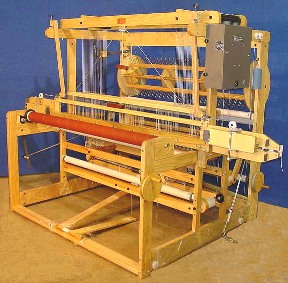The best textile judge that I know always asks, 'What is the PURPOSE of this object?" The purpose of an object may be to display the skill of the spinner/weaver/knitter. Or, the purpose of the textile object may be purely functional. Or, it may be to display the wealth of the wearer as in the case of haute couture. Or, in my case it is often to test how practical or functional a particular garment construction can be.
I just got back from Salmon Camp. The weather was "fishable". However, our hosts had told us to bring warm clothing as the weather would be very cold. And indeed, many in camp were complaining about the conditions. There was 5 or 6 ' of chop on top of a 10' swell, and the temperature was about 50F.
Our hosts have a happy, little, bouncy boat, that makes a fair amount of spray in those sea conditions, so oil skins are a must, but by the conditions faced by dory fishermen in the North Atlantic, the conditions were fine.
I wore my thinnest, and almost thread bare gansey, with wool pants under my rain gear. From the wording on the invatation, I had expected to need two ganseys, but one was very comfortable. I left my heavier ganseys in the truck.
When I judge that gansey by the needs of a (California) salmon fisherman, it is a great garment. The only way I can judge that garment is to put it on and wear it salmon fishing, trip after trip. Its virtues as a garment for salmon fishing do not show in a picture. Even touching and feeling it does not warn of its perfect warmth. (And, it is more tightly knit than any sweater that I have ever seen that was not knit with the aid of a knitting sheath.) Some might look at pictures of it and find faults in the knitting. For example, the sleeves are loose so that they can be rolled up for when I have to reach into the water to grab a downrigger weight. And the sleeves are a bit short so they are not fouled when I cut fish. (I wore it baiting crab traps the other day, and afterward it hardly stank at all.) The stitch pattern is Filey, but the construction is not Filey. It is not traditional. The knitting police see it, "see red", and blow their whistles. : )
Thus, what I consider real virtues of this sweater, would be considered "Faults" by some knitter who never crewed THE boat that went out first, and proved that the conditions were indeed fishable, and that there were fish to be caught, (as the rest of the camp sat by the fire watching the white caps on the water.) The garments that I make can not be judged by looking at photos on the internet, because they are not like any garments modern knitters have experienced. They cannot even be judged by touch and feel in a warm room, or even touch and feel sitting by a camp fire. The only way to judge my ganseys is to put one on and wear during a long day of being drenched by cold salt spray. The way to judge my socks is to put a pair on, and go use them. My fishing boot socks are from handspun 5-ply Romney. They suffered a great deal of wear on this last trip. So, I really am desperate to find a better way to make fishing boot socks. I am knitting prototypes from MacAusland wool.
The new salmon gansey will be knit from 10-ply.
I know about fisherman's rib/ linen stitch. I have made many pairs of boot socks with that stitch. (And worn them to mended rags.) However, the extra strand of yarn is not anchored to the primary knit stitch, and is free to move and wear. In Eastern Cross stitch, the crossing of the stitch means that the loop of yarn making the stitch is double weight and as thick as in fisherman's rib/ linen stitch, however it is anchored by being twisted and cannot move, shift, or wear. In short, each Eastern Crossed Stitch acts a tiny bit of cabled yarn at half grist, which provides a thick, durable, pad. For sock heels and soles, it provides a thick, well ventilated cushion. If you want a warm fabric, go with the fisherman's rib. If you want cushion, go with the Eastern Cross Stitch. Two different fabrics for two different purposes. Any knitter that dismisses one or the other, has not thought about function in their garments.
Now, a particular knitter may be knitting purely for status, or the status of the person who will wear the garment, but that should not keep the knitter from thinking. As I stared at the bobbing rod tip as we bounced up and down on the billowing main, I decided that I am very glad that I have "no credibility on the street". Any spinner/knitter that would try to judge my garments from a internet photo is not somebody that I would ever trust to judge my work in any way. Such self-appointed judges do not ask, 'What is the purpose of this object/" They are not as thoughtful as the judges that I do trust.



.jpg)